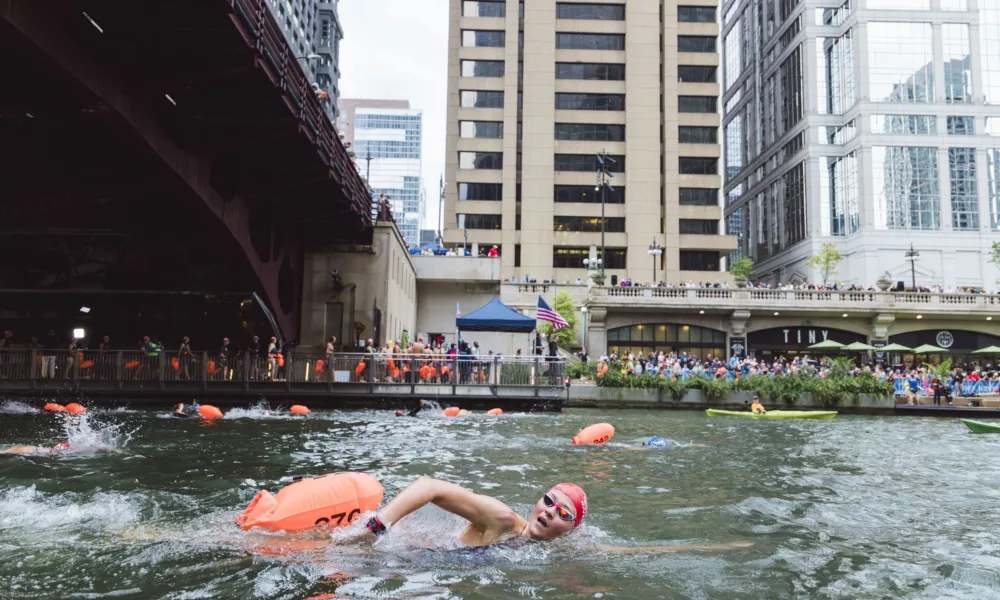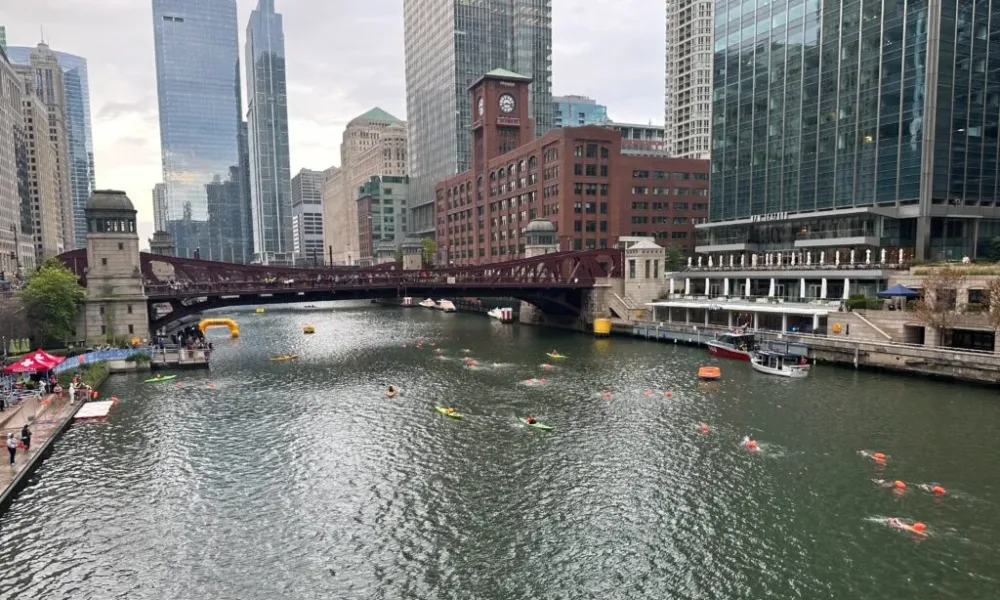Chicago, the city known for its architectural marvels, deep-dish pizza, and vibrant cultural life, recently made headlines for a historic event that combined adventure, tradition, and a touch of audacity: a group of swimmers took a plunge into the Chicago River in what is being hailed as the first officially sanctioned urban river swim in the city’s history. This unprecedented event was more than just a spectacle—it symbolized a new chapter in Chicago’s relationship with its waterways, blending environmental awareness, urban culture, and personal challenge.
Table of contents
- The Setting: Chicago River Through the Ages
- The Swim: Breaking Records and Traditions
- A Historic Moment for Urban Swimming
- Environmental Implications
- Stories from the Participants
- Challenges and Triumphs
- Looking Forward: Future Urban Swimming Events
- Health and Wellness Benefits
- Reconnecting Citizens with Nature
- Educational Opportunities
- Community Engagement and Social Impact
- Global Implications
- Lessons Learned
- Conclusion: A Milestone for Chicago
The Setting: Chicago River Through the Ages
The Chicago River has a history as colorful and transformative as the city itself. Originally a natural waterway flowing into Lake Michigan, it became a central artery for trade, transport, and industry. By the late 19th century, the river was heavily polluted due to industrial waste and sewage, earning a reputation as more of a utility than a natural treasure.
Efforts to reverse this damage began in earnest with the famous reversal of the river in 1900, an engineering feat designed to protect Lake Michigan’s drinking water. Since then, multiple projects have sought to revitalize the river, making it cleaner, safer, and more accessible to the public. Today, the Chicago River is a blend of natural beauty and urban design, featuring walkways, parks, and kayak rentals that invite residents and tourists to reconnect with the city’s waterways.
The Swim: Breaking Records and Traditions
On a crisp autumn morning, dozens of participants gathered along the banks of the river, decked in wetsuits and swim caps, preparing for a journey that would be both historic and symbolic. Unlike typical open-water swims in lakes or the ocean, swimming in an urban river presents unique challenges: unpredictable currents, fluctuating temperatures, and the constant hum of city life overhead.
Event organizers, in collaboration with the Chicago Park District and environmental agencies, ensured rigorous safety measures. The river’s water quality had been closely monitored in the weeks leading up to the event, and emergency boats and medical teams lined the course.
Participants included experienced swimmers, local athletes, and even a few adventurous first-timers. The swim covered a distance of approximately 1.5 miles, starting near the Loop and finishing at the scenic Riverwalk, allowing spectators to cheer along the banks.
A Historic Moment for Urban Swimming
Urban swimming events are relatively rare in major cities due to safety concerns and environmental regulations. Chicago’s river, historically considered untouchable for recreational swimming, has only recently met safety and quality standards that allow for public interaction. The Chicago River swim is not just a recreational milestone; it’s a symbol of environmental recovery and a step toward reimagining city waterways as spaces for human connection and enjoyment.

Many participants described the experience as surreal: the sensation of gliding through water surrounded by towering skyscrapers, passing under iconic bridges, and feeling the pulse of the city from a completely new perspective.
Environmental Implications
Beyond the thrill of the swim, the event highlighted ongoing efforts to restore urban waterways. The Friends of the Chicago River and other environmental organizations have long campaigned for cleaner water, sustainable development, and public access to the river. Events like this serve to:
- Raise awareness about water quality and pollution control.
- Encourage urban dwellers to engage with natural spaces in the city.
- Demonstrate the feasibility of safe recreational activities in restored rivers.
The swim also prompted discussions about long-term sustainability, including potential programs for annual urban swims, river clean-up drives, and educational campaigns on water conservation.
Stories from the Participants
The participants’ stories captured the imagination of the city. Emily Rodriguez, a professional triathlete, described her swim as “an exhilarating blend of sport and cityscape.” John Nguyen, a Chicago native, noted that he had never swum in the river before because of past pollution concerns, adding, “It feels like we’re reclaiming a part of our city that was lost to industry for too long.”
Children and families, though not participating in the main swim, joined the festivities along the Riverwalk, turning the event into a community celebration. Vendors, local musicians, and street performers contributed to an atmosphere of excitement and civic pride.
Challenges and Triumphs
Despite meticulous planning, swimming in a river is never without risk. Cold water temperatures, even in autumn, posed hypothermia risks. Debris and fluctuating currents required vigilance, and the event organizers had to coordinate with multiple agencies to ensure safety and legal compliance.
Yet, the triumphs were evident. Not only did all participants complete the course safely, but the event also generated immense public enthusiasm. Social media was flooded with photos and videos, and local media outlets covered the story extensively, celebrating a new chapter in Chicago’s urban adventure culture.
Looking Forward: Future Urban Swimming Events
This historic swim may be the beginning of a broader movement. Organizers and environmental advocates are already discussing annual swims, youth programs, and more inclusive events to encourage people of all ages to interact safely with the river. The success of this first swim demonstrates that urban rivers can be both safe and exciting recreational spaces.
Future events may include:
- Night swims with illuminated river routes.
- Charity swims supporting environmental or social causes.
- Longer courses for endurance athletes.
- Community engagement programs teaching water safety and swimming skills.
Health and Wellness Benefits
Swimming in natural or urban waterways offers physical and mental health benefits. It is a low-impact exercise that strengthens muscles, improves cardiovascular health, and enhances flexibility. Beyond physical fitness, urban swimming can provide a unique form of mindfulness—immersing oneself in flowing water while being present amidst the city’s energy can reduce stress and improve overall well-being.
The Chicago River swim is therefore not just a sporting achievement; it’s also a celebration of holistic health, connecting body, mind, and urban environment.
Reconnecting Citizens with Nature
One of the most profound aspects of this swim is its role in reconnecting citizens with nature. Urban environments often isolate people from natural experiences, but by turning rivers into accessible spaces, cities can foster deeper environmental awareness and appreciation. Chicago’s historic swim encourages citizens to view the river not as a polluted waterway but as a shared resource with recreational and ecological value.
Educational Opportunities
The event also opens doors for educational programs. Schools and universities may incorporate urban swimming into curricula that focus on environmental science, urban planning, and public health. Participants and spectators alike can learn about:

- The history of the Chicago River and its industrial past.
- Water quality management and pollution prevention.
- The ecological significance of urban waterways.
- How human activities can harmonize with natural ecosystems.
Community Engagement and Social Impact
The swim fostered a sense of community, bringing together athletes, families, environmentalists, and city officials. Public events like this demonstrate how shared experiences can strengthen civic identity and promote social cohesion. Chicagoans celebrated not just a swim, but a collective accomplishment that symbolized city pride, environmental recovery, and innovation in urban planning.
Global Implications
Chicago’s successful urban swim has caught the attention of other cities globally. It presents a model for urban revitalization and recreational innovation, showing that with proper planning and collaboration, even rivers once deemed unsafe can become vibrant public spaces. Cities facing similar challenges can draw inspiration from Chicago’s approach, combining infrastructure, environmental science, and community engagement.
Lessons Learned
Organizers of the historic swim shared several key lessons:
- Preparation is paramount: safety, water quality, and logistics are critical in urban swimming events.
- Community involvement enhances impact: engaging local residents, businesses, and schools amplifies the cultural significance.
- Environmental advocacy benefits from tangible experiences: allowing people to interact directly with restored natural spaces fosters lasting commitment to sustainability.
- Urban innovation requires vision: transforming a historically industrial waterway into a recreational hub is a testament to long-term planning and collaboration.
Conclusion: A Milestone for Chicago
The first historic swim in the Chicago River marks a milestone in the city’s history, blending adventure, environmental restoration, and civic pride. It demonstrates that urban rivers can transcend their utilitarian roles, becoming spaces where people engage with nature, test personal limits, and celebrate community.
As the sun set on the event, with swimmers emerging from the water, the city witnessed not just a sporting achievement but a symbol of progress, where innovation meets tradition, and urban life embraces its natural heritage. Chicagoans, and indeed urban dwellers worldwide, now have a blueprint for how cities can reclaim rivers as vibrant, living spaces—places of play, learning, health, and hope.
The historic swim in the Chicago River is more than a moment in time; it is a call to action, a reminder that our cities can be reimagined, our rivers restored, and our communities brought closer together—all with a single courageous plunge into the water.
